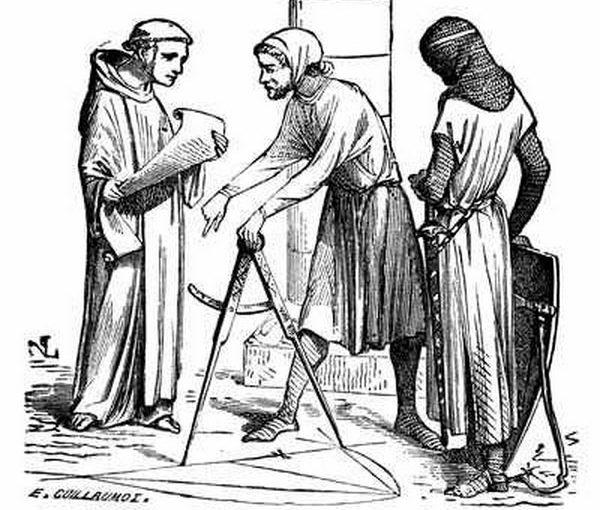The use of allegory and symbolism is a method of teaching that is still applied in Freemasonry today.
The allegory is a figure of speech that can be interpreted to reveal a hidden meaning, typically of a moral nature and symbolism, in the words of Albert Pyke [1] is: “(…) the soul of Masonry. Every symbol of a lodge is a religious teacher, the mute teacher also of morals and philosophy. It is in its ancient symbols and in the knowledge of their true meanings that reposes the pre-eminence of Freemasonry over all other Orders”.
Even our name – Freemason – is symbolical and it literally means “builder in stone”. Of course,that is not what we do. We are engaged in building work only in a figurative sense of the word and so we describe ourselves “speculative” Freemasons. We allegorise the development of human character to the erection of a structure and we equal the virtues which constitute the finished character of man, to the strengths of a stone which contributes to erect the perfect finished structure.
In biblical times the earth was thought to be square. Isaiah (xi, 12) speaks of gathering “the dispersed of Judah from the four corners of the earth” and in the Apocalypse (xx, 9) there is a vision of four angels, “standing on the four corners of the earth”. Of course the meaning that the cube had in ancient times can never be shared by our modern minds but so grounded was that belief that it made the square a Masonic symbol to represent the Lodge.
One of the things that the Initiate notices in a Masonic Lodge and that later, as an Apprentice he must learn the signification of is a stone that appears on both the Junior and the Senior Warden’s pedestals.
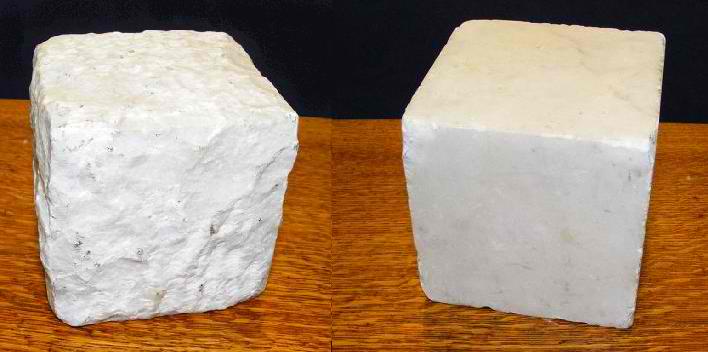
The stone is called “ashlar”; one looks as if it had just come from the quarry in an unfinished state, the other has a smooth and perfect pattern. The stones represent two different levels of attainment.
The rough ashlar on the Junior Warden’s pedestal symbolises the uneducated man who is still unfit for society; the polished and perfect ashlar on the Senior Warden’s pedestal represents what the object should be like to be employed in the construction of the perfect building.That is an allegory!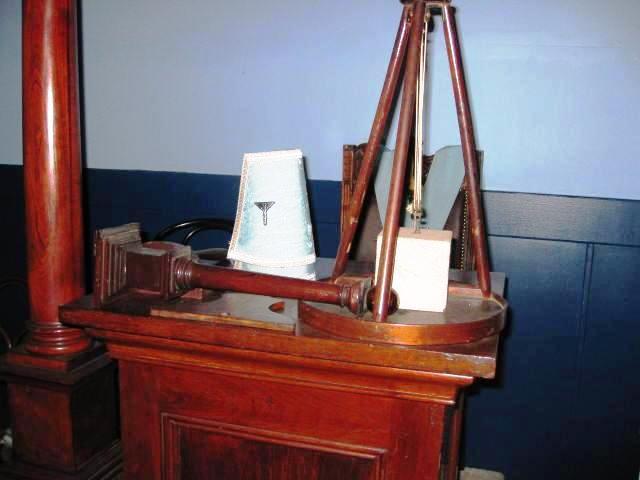
In general,our Brethren only know of these two stones in Freemasonry and they are blind to the fact that there is another object – very similar to the ashlar – that is just an equally old and important Masonic symbol. It is regularly used in Continental Freemasonry and is shown in the tracing boards of the French Scottish Rite. The object is the pointed cubical stone or pierre cubique a pointe, similar in appearance to a church tower or to a cube with a pyramidal top. The stone is said to represent the Opera Maestra that every Freemason must accomplish as a Companion. [2]
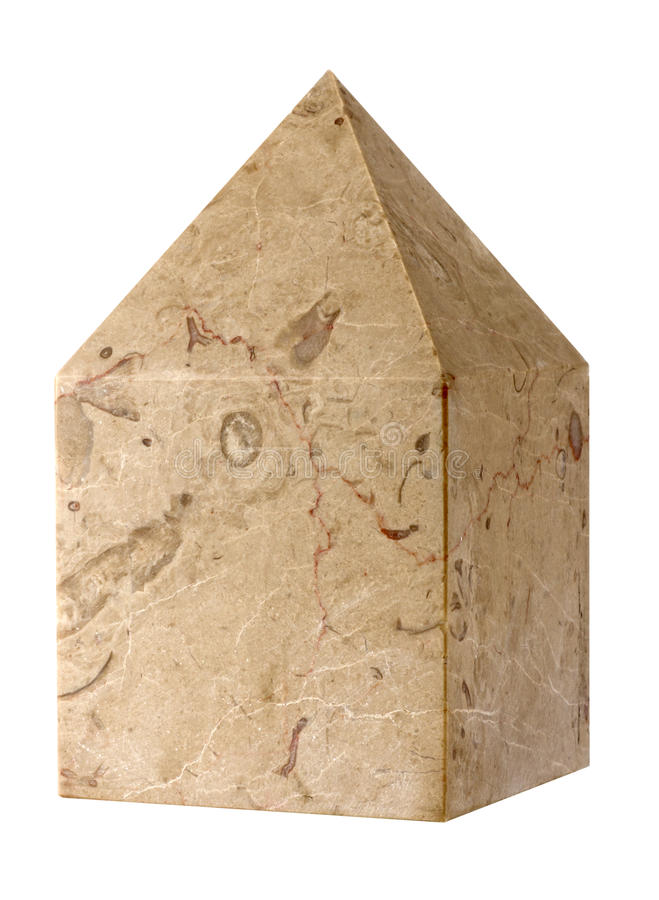
On the Continent, at the beginning of the 18th century, the mention of a cubic stone was always only taken as a reference to the pointed shaped one. The rituals ignored the intermediate state of the smooth six-sided stone which will make its appearance only later, as it is proven by the old tables of Continental Lodges.
Unfortunately in time, the symbol of the ashlar has come to eclipse that of the pointed cubic stone in many Rites, other than the French.
As it has been explained earlier, in Freemasonry the smooth ashlar corresponds to the end of the apprenticeship and the taking of the first step as a Companion. Instead, the pointed cubic stone symbolises the end of the work, the crowning of the efforts, the achievement of the objective, and the realisation of the Opera Maestra by the Companion at the end of his progression.
It can also be said that the tip of the pyramidal shape of the cubic stone represents the “centre of the world”, the opening onto the divine, the meeting point between the manifested and the unmanifested.
The pointed cubic stone was known in England with many different names – broached turnel, thrunal, thurmer or turner; broached dornal or dornel; broached mal; broad oval; etc.
An old Masonic catechism refers to the pointed cubic stone like this:
- what are the immovable Jewels (of the Lodge)?
- The tracing board, the rough Ashlar and the broached Turnel
- What are their uses?
- The tracing board is for the Master to draw his Designs on, the rough Ashlar is for the Companions to try their Jewels upon and the Broached Turnel is for the
Entered Apprentice to learn to work on.
The text of another 18th-century book – “La Vraie Macon dedie aux masons instruits” – reads:
Q: what is (the ashlar) use?
A: the rough stone is used by the Apprentice to work on, the (pointed) cubic stone is used by the Companion to sharpen his tools, and the Tracing Board helps the Master to realise his design.
And it goes on by saying: “Don’t forget that even the philosophers allegorised the Apprentice to the rough stone and compared the Companion to the (pointed) cubic stone, because they saw that stone as the perfect object. It possesses the largest number of joint surfaces and it is an object that can have had many uses.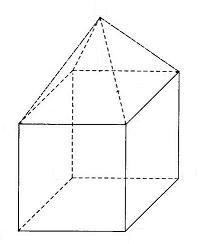 By finishing this stone in a pyramidal shape one locks in it all the sacred numbers, i.e. 1, 3, 4, 5, 3 times 3 and (consequently) the number 9. Furthermore, to shape that stone into a pointed cubic object it was necessary to use the compass, the square, the level, the plumb rule i.e. all instruments that symbolise sciences and virtues. That was the method by which those philosophers used to make what in Freemasonry we call a Companion “.
By finishing this stone in a pyramidal shape one locks in it all the sacred numbers, i.e. 1, 3, 4, 5, 3 times 3 and (consequently) the number 9. Furthermore, to shape that stone into a pointed cubic object it was necessary to use the compass, the square, the level, the plumb rule i.e. all instruments that symbolise sciences and virtues. That was the method by which those philosophers used to make what in Freemasonry we call a Companion “.
In various books of instructions published later than 1757, we are on many occasions told what – metaphorically, as it would not make any sense otherwise – was used to sharpen the workmen’s tools.
For example in a catechism dated 1860 it is written : “this (pointed cubic) stone which is used to sharpen the tools, reflects the study, the passion for the quest of the truth; it helps to sharpen the mind and it gives it vigour and understanding ; in other words it makes an initiate an individual well accomplished in the sciences , the arts, the theory and the practice of philosophy”.
In another catechism of the same period, we are also told that “the rough stone on which the Apprentice works is the emblem of our soul, susceptible of the good and bad, whilst the pointed cubic stone – which is used by the Companions to sharpen their tools – reminds us that only by being vigil we can protect ourselves from vices”.
But how could a stone with a pyramidal facet ever be used for building purposes, you may justly observe?
The pointed cubic stone – and a slightly different version of it, called keystone – far from being useless, was of a unique importance! In the arches and vaults of ancient monuments like Temples and Cathedrals, the invaluable object that ultimately fixed and kept everything together in place was the keystone, a brick very similarly shaped to the broached turnel. The story goes that the Architect who supervised the building of the Holy Temple initially rejected such a stone as useless and banished the craftsman who had submitted it. Except for that evidence later proved the Architect to have been preconceived and mistaken and the stone to be the most important piece of the whole structure.
The Brethren in Mark Masonry are familiar with this tale for the Mark ritual is based on re-enacting the story of the construction of King Salomon’s Temple.

In Mark the Junior, Senior Overseer and Master Overseer , all in turn, reject the stone and reprimand the workman for having produced such an object and for daring to demand his wages. To the quarry workman presenting his stone, each of the mentioned officers said: “This is a curiously wrought stone, neither square nor oblong. I cannot receive it” as it is not “in accordance with the plans” and the stone is eventually thrown into a mountain of rubbish.
But upon the work soon reaching a deadlock and the Master – or Architect – enquiring as to the reasons, the SW reveals: it is “for the want of a keystone for the sacred arch of King Solomon’s Temple”. The rejected stone is recovered, the quarryman is congratulated on by the Master and he is at last made a Mark Mason and allowed to be paid his wages.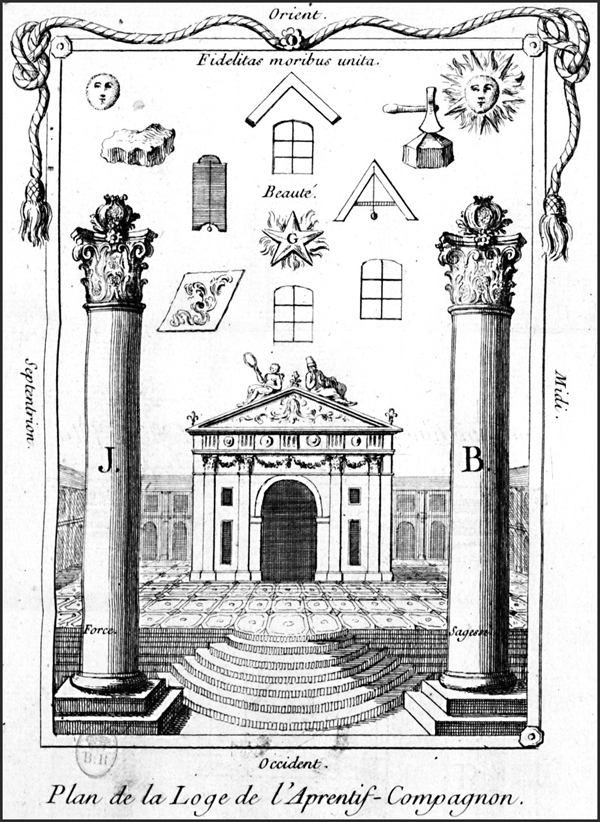
It is worth noting that in the tracing board of the French Scottish Rite, the pointed cubic stone is always depicted with a hammer or an axe lying horizontally on its tip as if were symbolising a thunderbolt that falls from the sky – see how closely it is drawn to the sun – onto the stone (the earth) and breaking it open. It is an allegory of the divine entering the human heart and enlightening it with the truth. The tracing board sketch evokes the spiritual realisation of Man at its best!
In essence thee journey, the transition from the rough stone condition to the pointed cubic stone is a representation of the initiac journey and of the passage that every man and every Freemason in search of the truth, must successfully undertake.
I close this paper by again quoting the words of Albert Pyke , who said:
“In other respects some of them (i.e. the other Orders) may even compete with Freemasonry, rival it, perhaps even excel it; but by its symbols Freemasonry will reign without a peer when it learns again what its symbols mean and that each (symbol) is the embodiment of some great, old, rare truth”.
Aldo Reno
Sources:
Latomia, December 2010 – “La Piedra cubica apuntada”; “Freemasons Guide and Compendium” by Bernard E. Jones
[1] Boston, Massachusetts (December 29, 1809 – April 2, 1891) was an American soldier, writer, attorney and Freemason who in 1859 was elected Sovereign Grand Commander of the Scottish Rite, Southern Jurisdiction.
[2] In older times Freemasonry had only two grades: Apprentice and Companion.
- His Majesty’s Servant , David Garrick Esq – Freemason ? - June 7, 2024
- Influencia de la Masonería en Chile - April 29, 2024
- Pomegranate in Freemasonry – its significance - March 11, 2024

